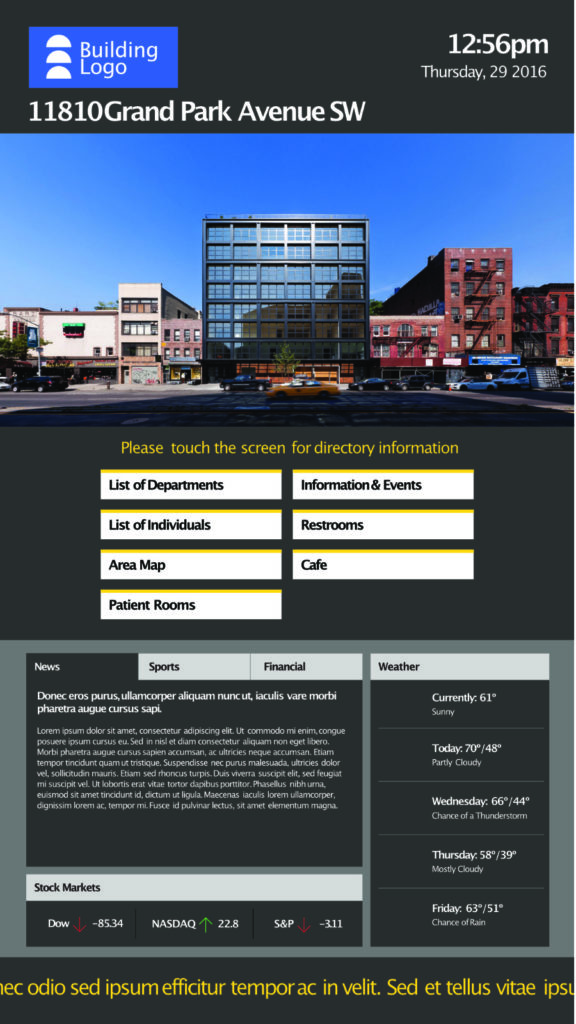While traditional, analog building directories may still exist, the majority of businesses – of all sizes and across industries – have made the switch to digital solutions. Given their broad utility, attractive design and reasonable pricing, it’s easy to see why digital directories have become so popular over the past five years.
What is a Digital Directory Board?
Digital directory boards help visitors, employees, customers and guests locate specific areas of a building or campus. This can include a wide range of locations – mall stores, businesses within a commercial office building, airport terminals and gates, conference rooms, or the offices of various individuals, such as employees or team members, for example.

What Types of Digital Directories are Available?
Digital directories are available in several styles, some more complex than others.
- Non-Touch Static: These digital directories display the same information at all times. They are common in office building lobbies, where they show a list of offices, usually by business name, alongside their location, like floor and suite number.
- Non-Touch Dynamic: These digital directory boards are not interactive but they are able to display more information by rotating through a set number of pre-programmed screens. While they most often show typical directory information, screens can also be added to display weather, traffic and news, too.
- Touchscreen and Interactive: Digital directories that can be manipulated by the user are the most expensive, but also offer the most utility. They also offer greater opportunity to capitalize on the larger investment via avenues such as paid local advertising.
Which Businesses can Benefit from Digital Directory Boards?
Digital directories can be found in any number of environments. Some of the more common places they appear are airports and other transportation hubs, hospitals, shopping centers, judicial complexes/justice centers, office buildings, and college campuses.
- Office buildings: Digital office building directories are usually located in the lobby, and depending on the size of the building, are sometimes available on each floor.
- Healthcare: Large hospital campuses can benefit from digital directories to help patients feel more comfortable and less anxious about finding their way around a new place.
- Schools: College campuses were some of the earliest adopters of digital directories. Given they are some of the only places around that regularly “turn over” ¼+ of their population, it’s easy to see why they would be needed.
- Judicial complexes and justice centers: In larger cities and county seats, judicial complexes can be enormous, as well as confusing to navigate. And, for the vast majority of visitors, it’s likely their first (and hopefully, last!) time on the campus, which means there’s unlikely to be enough time for them to familiarize themselves with their surroundings well enough to become comfortable with them.
- Transportation hubs: Airports have quite a range of different locations that travelers may need to find. It’s not just gates, but instead, restrooms, lost luggage, baggage claim, airline assistance, restaurants and stores, too.
Where can a directory board be placed?
One of the many benefits of digital directories is that they are available in many different sizes and able to be placed almost anywhere:
- Movie Theaters: Cinemas can use digital directories to display which movies are playing and what times, as well as the specific theater each film is playing in. They can be placed both at the ticket booth, and inside the lobby.
- Malls: Shopping centers utilize directory boards to display store locations at regular intervals within the building. They are most often hung from ceilings at a level that is eye-catching but unobtrusive.
- Bus Stations: Transportation centers use digital directories to help passengers locate the correct bus terminal, as well as arrival and departure times. They can be located at ticketing areas, as well as at each terminal.
- Hospitals: Healthcare campuses often use directory boards in multiple areas to help assist visitors in finding departments, offices and individuals, as well as common areas like cafeterias and gift shops. They are usually placed wherever there is heavy foot traffic, such as by elevators or in lobbies.
7 Main Benefits of Interactive Digital Directory Boards
While digital directories that are configured with touchscreen, interactive capabilities may be more expensive, the range of benefits available can make them well worth the higher price. Some of these include:
1. Customizable messaging: Messaging can be updated regularly in order to keep it relevant and useful to its intended audience. In environments like hotels or conference centers, for example, digital directories can be used to communicate information about events and meetings, even when they change frequently from day to day.
2. Better user engagement and attention: Interactive digital directories are far more modern and attractive than their analog counterparts, leading to better and more user engagement. They are a simple way to help update and modernize a range of spaces, in particular, office building lobbies.
3. Ease of updating and scheduling: Because digital directories are computerized, they can be easily updated remotely, and new content scheduled to be pushed out on a regular basis. Colleges and universities utilize this feature frequently in order to help students and staff identify classrooms and lecture halls, especially when spaces are shared and users change frequently.
4. Effective in emergency situations: In the case of an extreme weather event or area safety lockdown, digital directory boards, like those found in “smart cities,” can be used to quickly broadcast emergency information.
5 .Helpful for wayfinding and navigation: Interactive digital directories can be integrated with software that allows them to be used for wayfinding and navigation, including turn-by-turn instructions, mobile handoff, and lighted paths. Large educational campuses, in particular, often find this type of utility helpful for directing new students and visitors to their destinations.
6. Revenue generation: Digital directories can be used as an additional revenue source when partnering with local and national businesses to display paid advertisements. Shopping centers are one of the most common environments to find directories that are also used to show ads.
7. Branding and Brand Awareness: Digital directory boards can be customized with “wraps” or powder coated with the company’s brand colors and/or logos. Another way to reinforce branding is with on-screen messaging that can be shown on the “attract” screen, interspersed with other screens, or even presented subtly on every screen in the rotation. Nearly every organization that invests in digital directories chooses to take advantage for at least one of these forms of branding, from ball parks to office buildings.

How to create a digital directory board for your business
Digital directories are incredibly popular and can be one of the most affordable types of kiosks to build. In order to get the process underway and have it running smoothly, there are some simple steps to follow:
- Find a reputable digital signage developer and provider: There are many kiosk companies in the digital signage space. However, most are fairly new, and almost none provide turn-key manufacturing services from design to deployment. Choosing a partner who has been in business for many years and can provide end-to-end service, like REDYREF, can help ensure the project’s success.
- Discuss your company's use case for digital boards: This is important because it is what will determine the size and type of display needed, as well as any software, components and integrations required.
- Review the development proposal and quote, as well as any installation or service agreements: Review the proposal and quote, make sure that all of the requested requirements have been met, and don’t be afraid to ask questions.
- Approve proposal for manufacturing: Even if they handle the design and sales aspects of their kiosk programs, most kiosk companies do not manufacture their digital directory boards, but instead, bid them out for manufacturing elsewhere. Companies like REDYREF, however, manufacture their products on-site, and even welcome customers to watch their kiosks being fabricated and assembled right in front of them, whether they are working on a kiosk prototype or full production run.
- Deployment: If an installation or service contract was included in the proposal, the kiosk company will install the digital directory based on that agreement, and will be available to troubleshoot any issues at that time, or in the future. This often includes training staff on how to use, maintain and update the digital directory. As a full-service kiosk solution provider, REDYREF is able to provide all of these options to customers as part of their kiosk manufacturing and service contracts.
Why Choose REDYREF for Digital Directories?
Whether for hospitality, healthcare, educational, or office management needs, REDYREF offers kiosks manufacturing for a range of digital directory designs suitable for every environment. From static digital personnel listings, to interactive maps, weather, stock prices, digital advertising and local area information, our directory software can be customized in hundreds of ways in order meet the needs of our customers. Ready to learn more? Contact REDYREF today by requesting an online quote, or giving our sales team a call at 1.800.628.3603.


